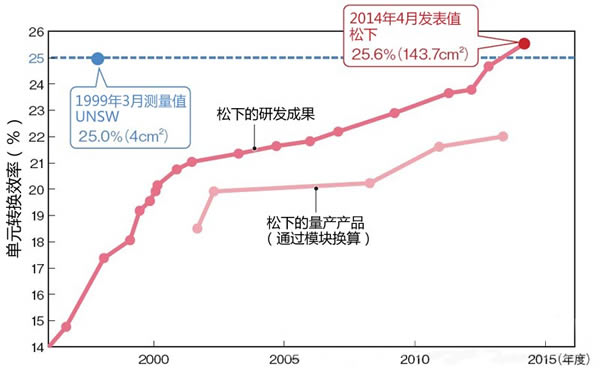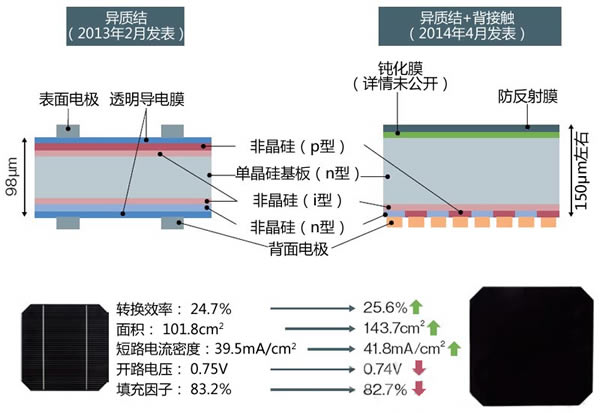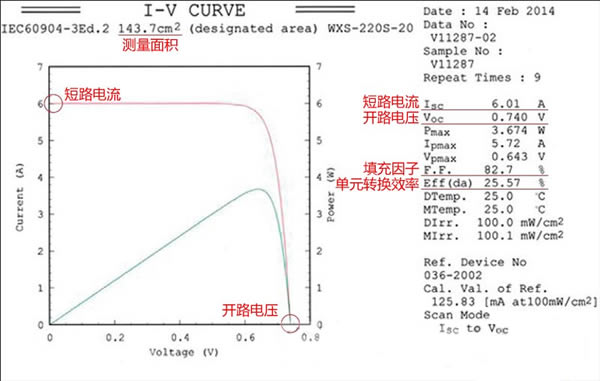The cell conversion efficiency of crystalline silicon solar cells has reached a new high, marking the best performance in 15 years. As the most widely used technology in the solar industry, crystalline silicon has long been the standard for photovoltaic cells. The previous record was set by the University of New South Wales (UNSW) in 1999 with an efficiency of 25.0%, but now Panasonic has broken that record with an impressive 25.6% (see Figure 1).
What makes this achievement even more significant is the scale at which it was achieved. Unlike the UNSW record, which was set on a small 4 cm² unit, Panasonic’s breakthrough was made on a full-sized solar cell measuring 143.7 cm². Additionally, the company developed a module using 72 of these cells, resulting in a total output of approximately 270W—25W higher than their current commercial products.

**Using New Structures to Push Boundaries**
The theoretical maximum efficiency of crystalline silicon cells is around 29%, and reaching 25–26% means the technology is getting very close to its limits. With this new milestone, the solar industry is paying closer attention to how much further efficiency can be improved. According to Panasonic, the next goal is to reach 26%, a target they believe is achievable.
Efficiency improvements are not just about theory. Panasonic has been experimenting with advanced structures like the "heterojunction" design, where an amorphous silicon layer is applied to a silicon wafer. This helps reduce carrier recombination, improving voltage. Traditional designs place electrodes on both the front and back surfaces, but Panasonic took it a step further by introducing a "back contact structure." By removing the front electrode, they reduced light blocking, allowing more current to flow.
This approach led to a notable increase in short-circuit current density compared to their earlier heterojunction model from 2013 (see Figure 2). Combining this with the high voltage from the heterojunction structure helped achieve the 25.6% efficiency mark.

While the open-circuit voltage slightly dropped due to increased wafer thickness, Panasonic is actively investigating the issue. Other companies, such as Sharp and LG Electronics, are also working on similar technologies. Sharp, for instance, achieved 21.7% in 2012 and quickly climbed to 24.7% in 2013, eventually hitting 25.1% in April 2014. These developments suggest that the race for higher efficiency is intensifying.
Although Panasonic hasn’t yet decided whether to implement this new structure in mass production, the company believes the method of boosting efficiency has expanded significantly. They began researching this technology several years ago and have now successfully exceeded 25% efficiency (see Figure 3).

However, bringing this innovation into production will require changes to manufacturing processes, such as adding a backside pattern or refining module assembly. While the back contact structure offers benefits, it also introduces challenges, such as increased stress. Panasonic claims they can manage this through careful design.
Currently, the focus of heterojunction cells is still on manufacturing rather than purely on efficiency. But with the potential to exceed 25%, the future of this technology looks promising. As research continues, we may soon see even more efficient solar panels entering the market.
Ringlok Scaffolding System,Ringlock Scaffolding,Main Frame Scaffolding,Scaffold Ladder System
Chuzhou Jincheng Metalwork Co.,Ltd , https://www.jinchengscaffold.com
